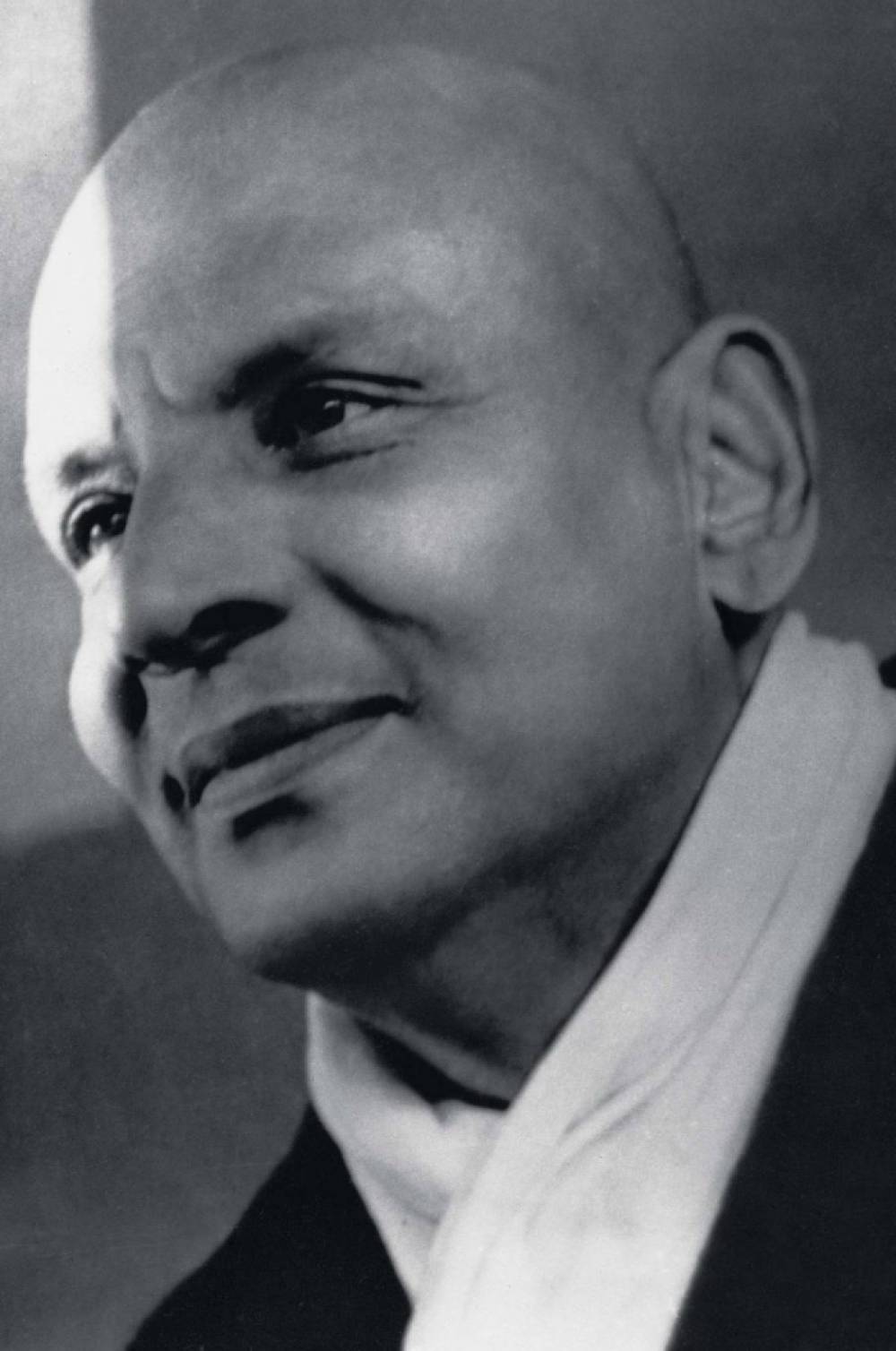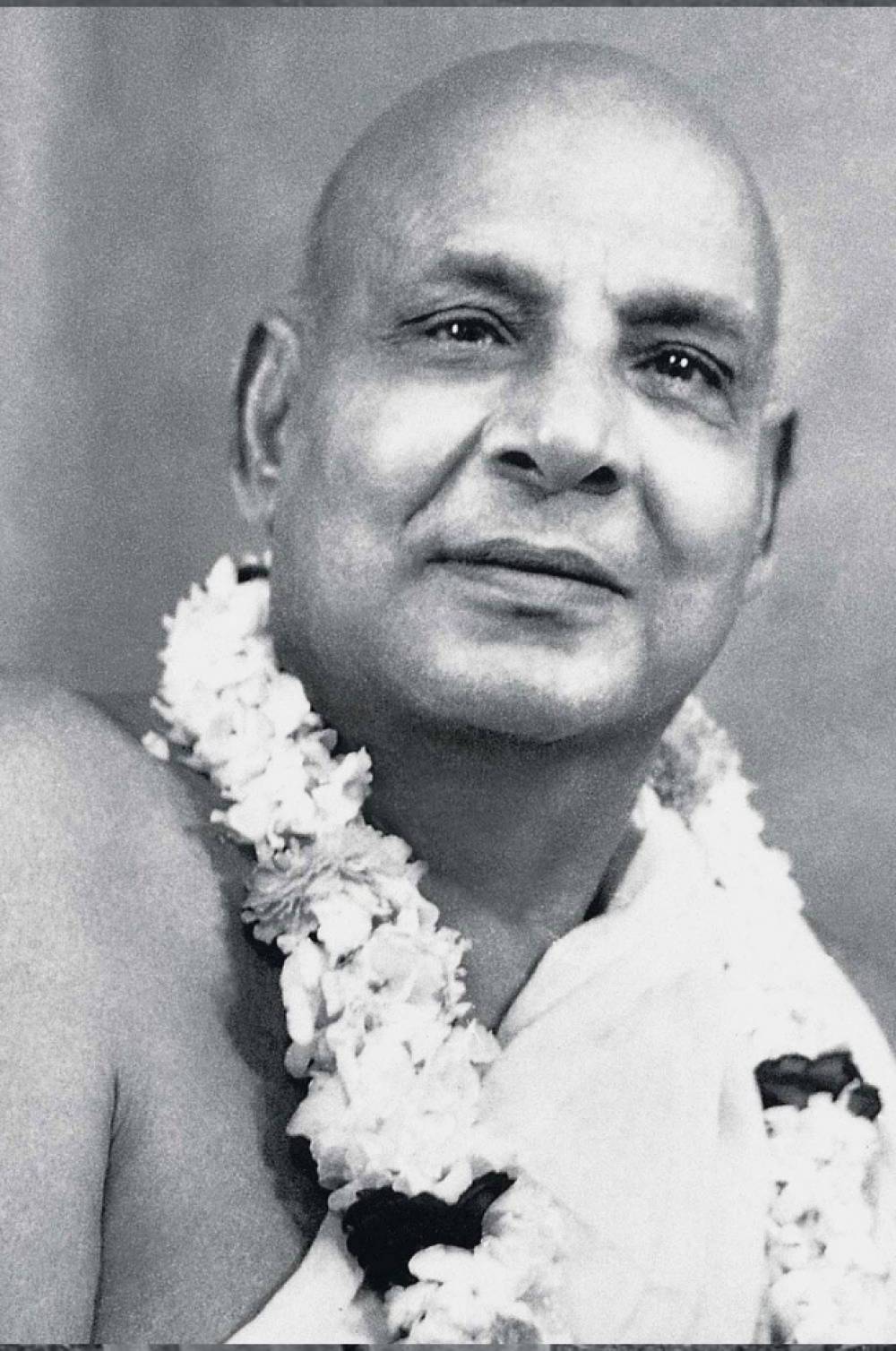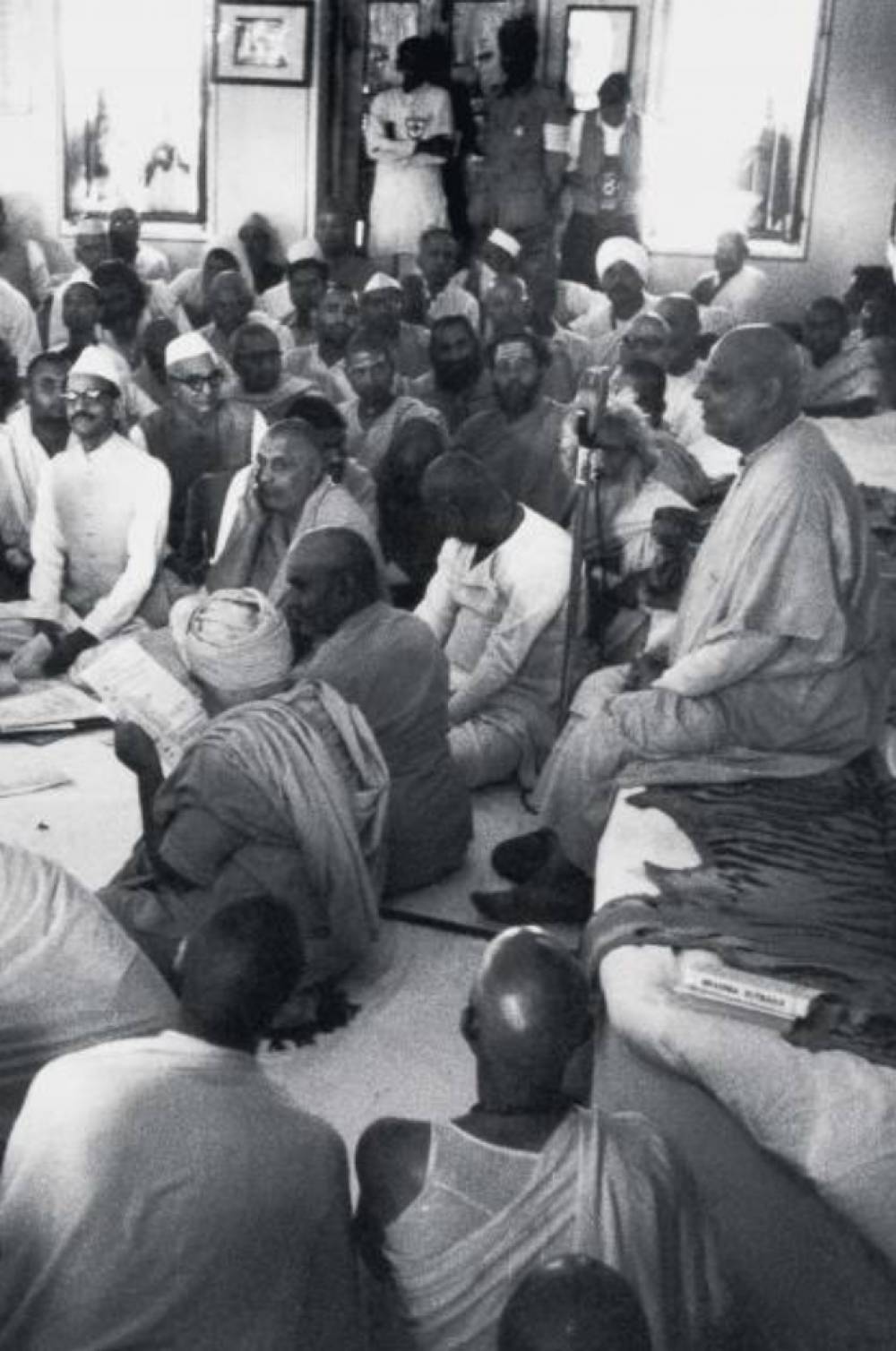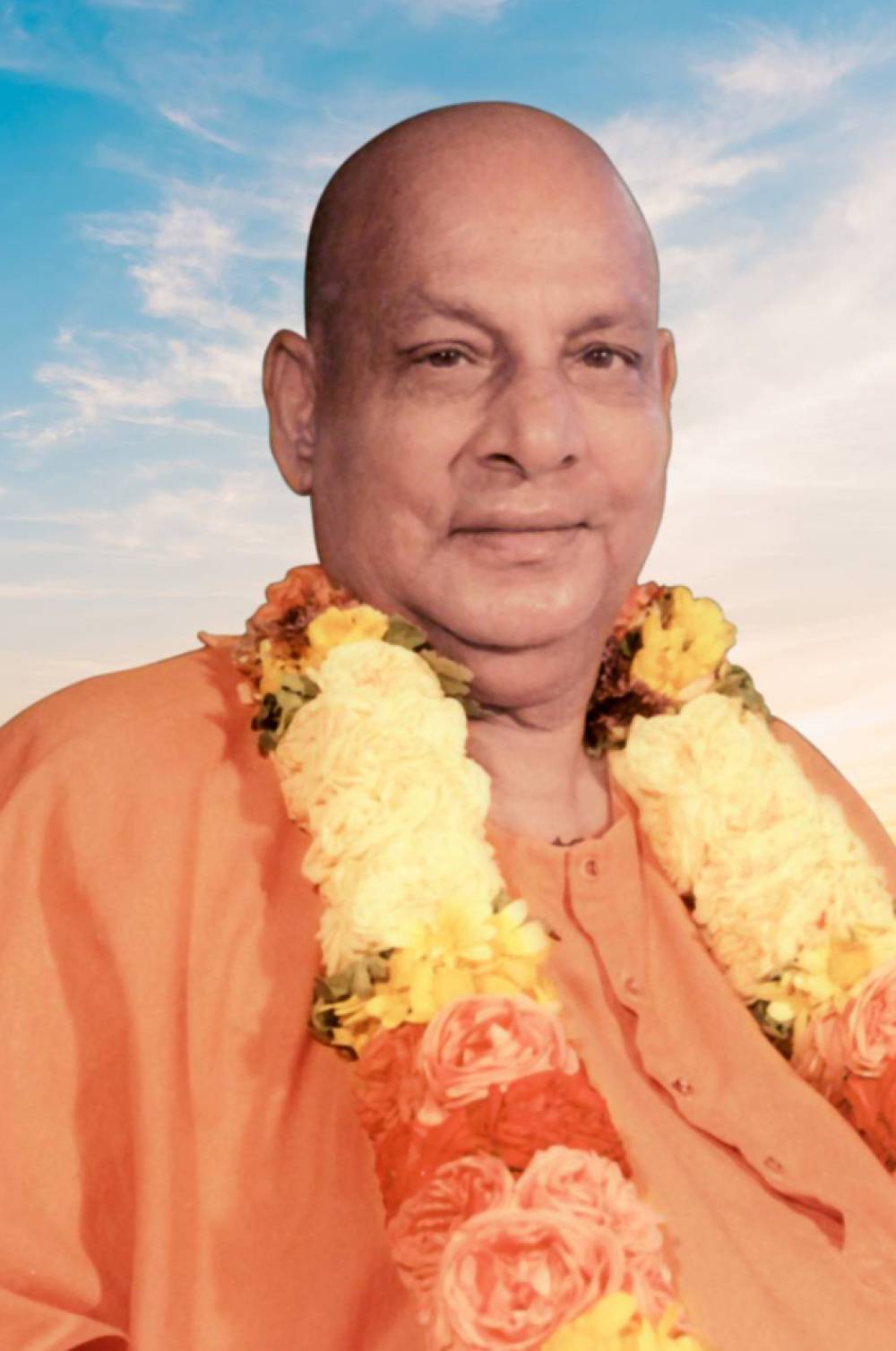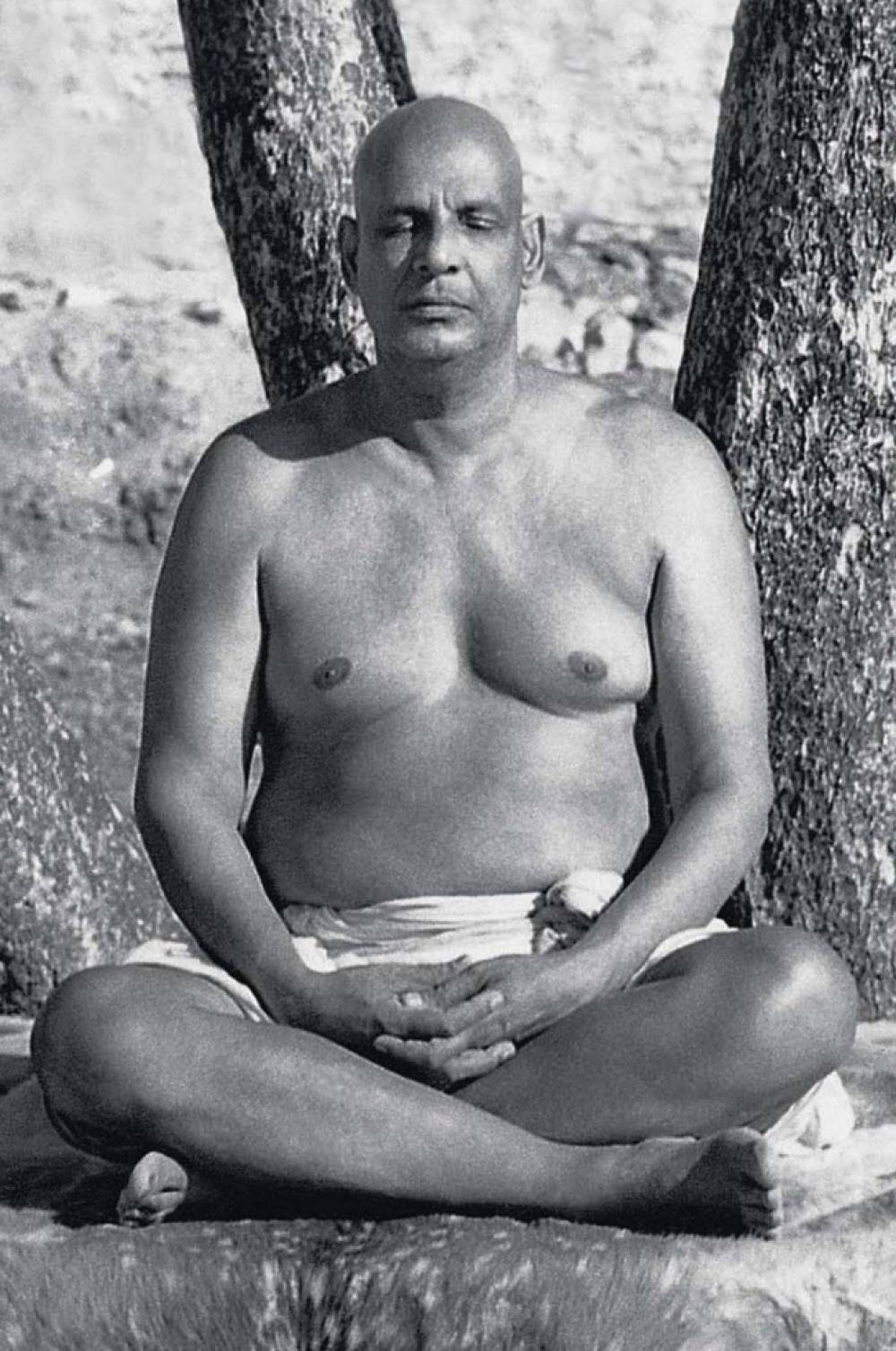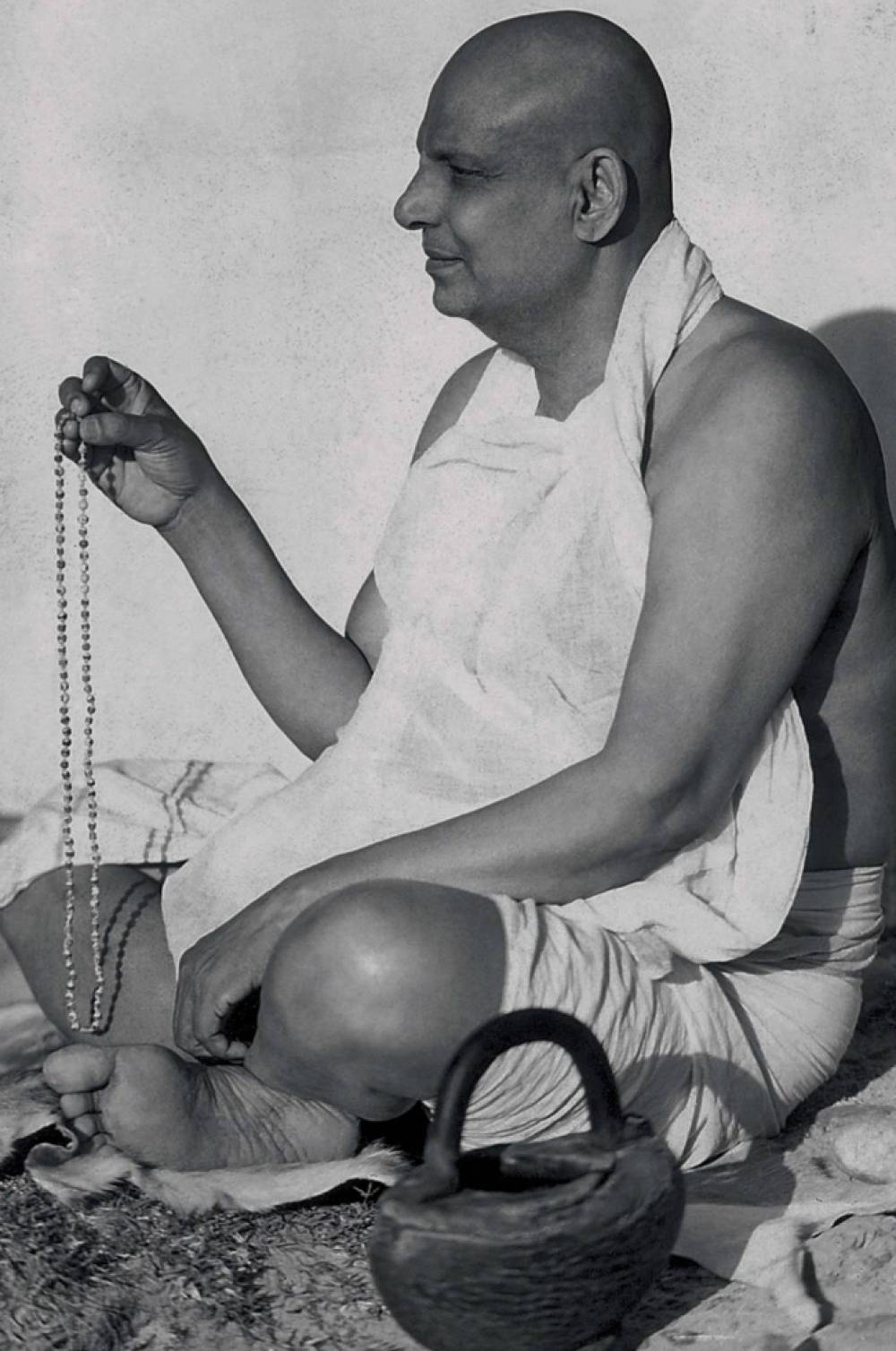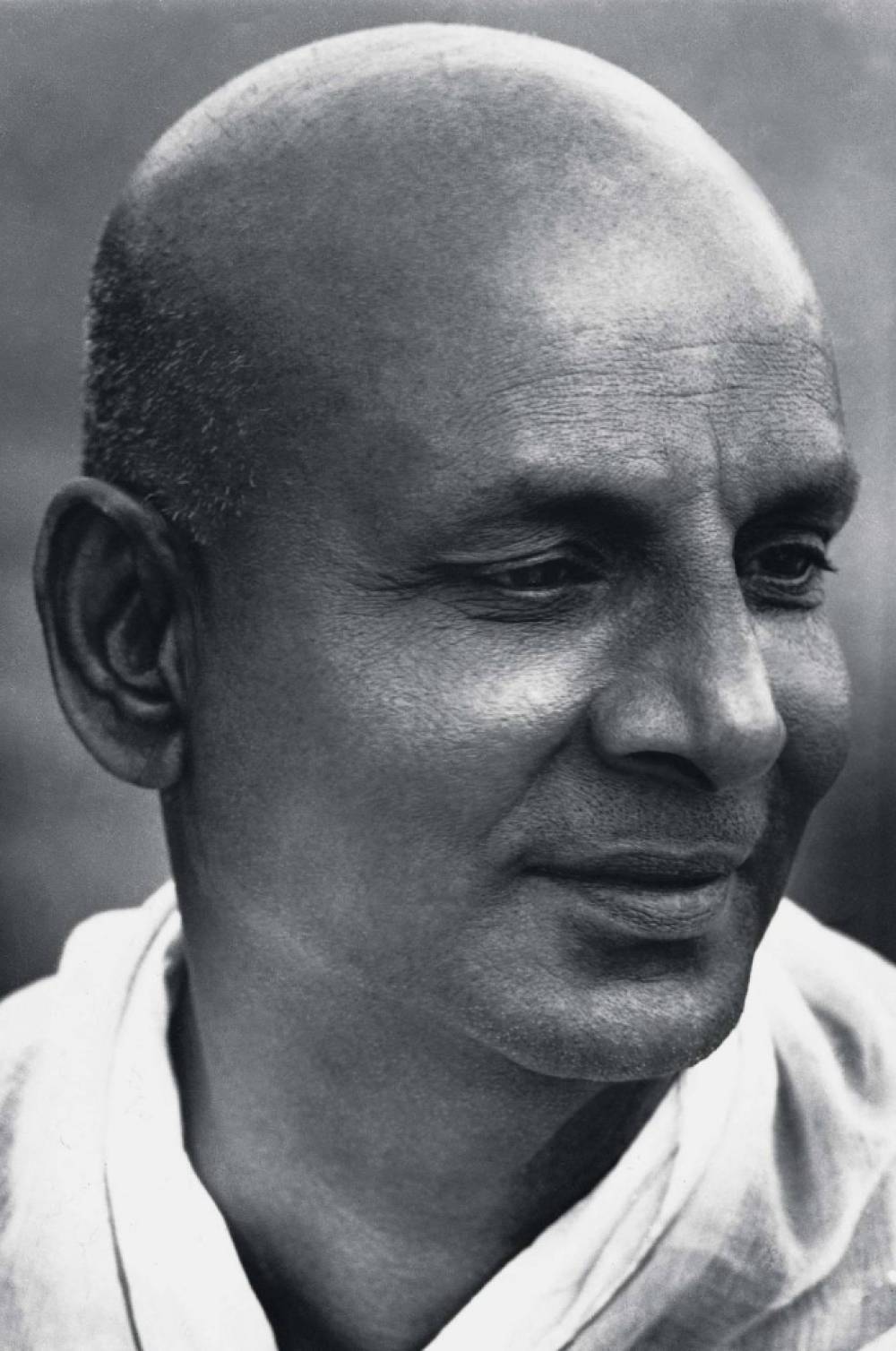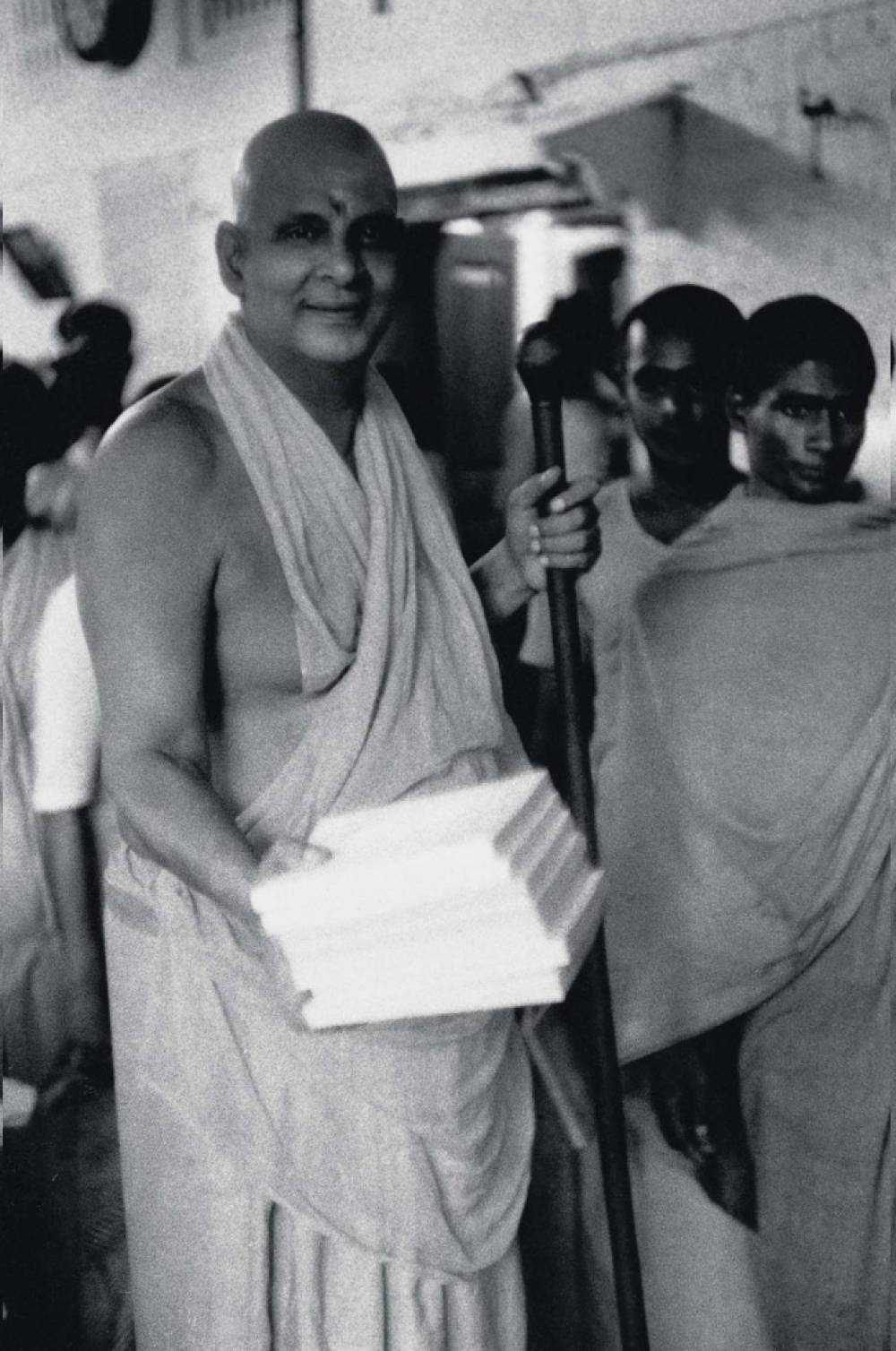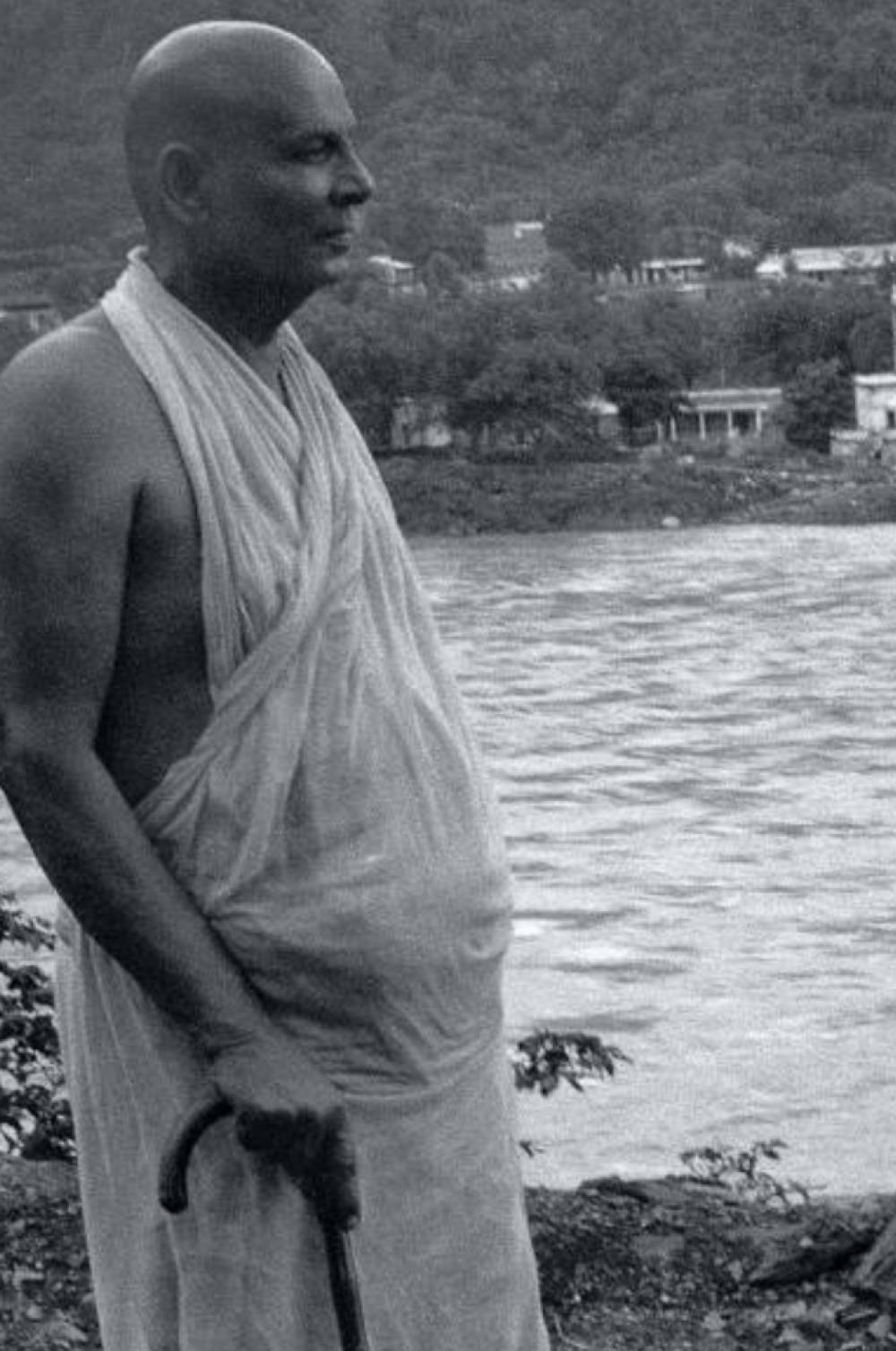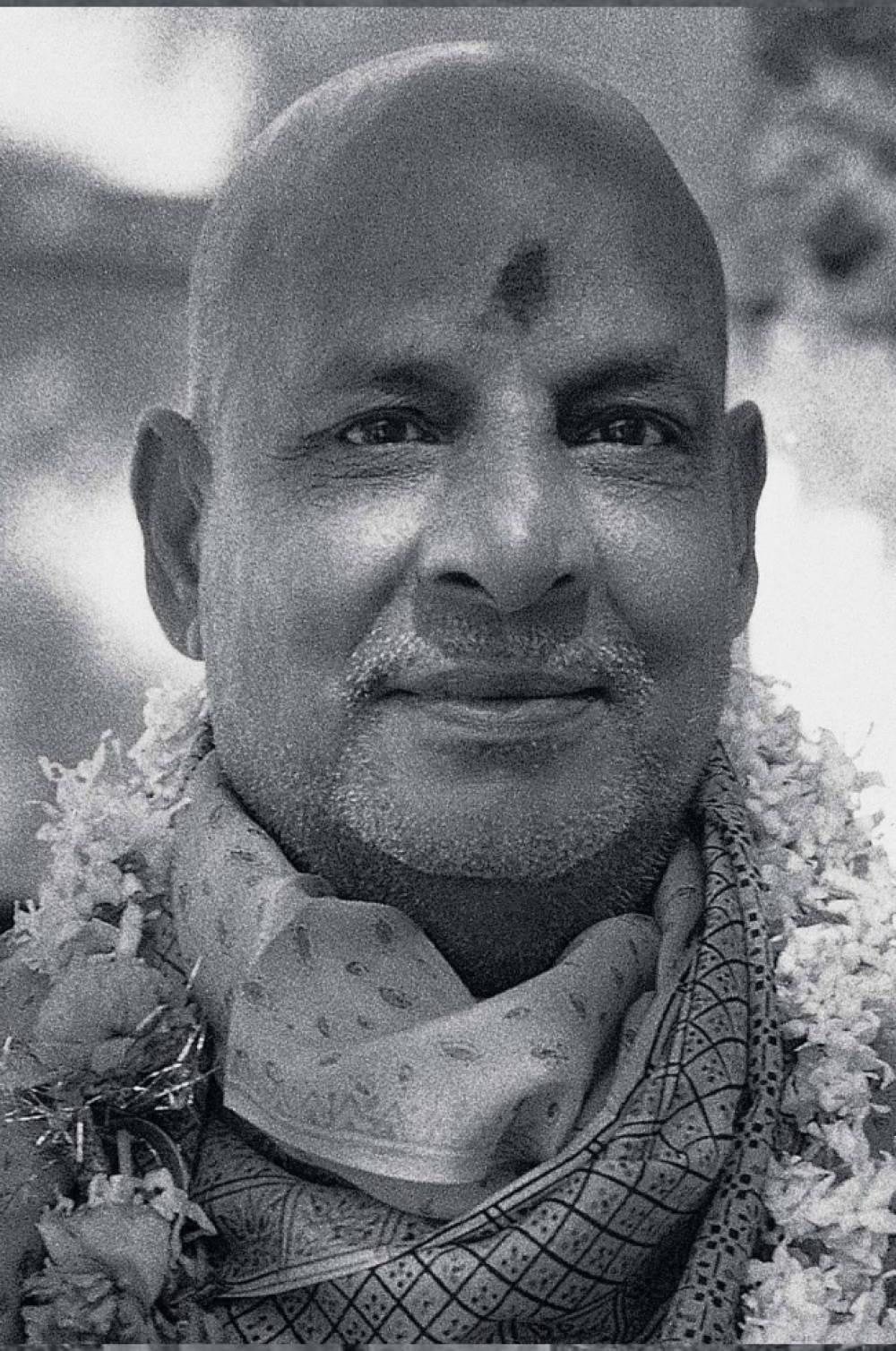OUTLINES OF BHAKTI YOGA SADHANA
What is Bhakti? Bhakti or devotion is supreme Love directed towards God.
There are two kinds of Bhakti...
Kamya.
Nishkamya.
The two kinds of Nishkamya Bhakti are...
Vaidhi or external Puja and Japa etc.
Ragatmika or Prema (internal) due to extreme Prema or intense Love.
Four kinds of Bhaktas (Gita, VII-16)...
Aarta (the sufferers as Draupadi and Gajendra etc.).
Jijnasu (the seeker as Uddhava).
Artharthi (he who has the desire to obtain some object. Dhruva is an example).
Jnani (the Wise as Sukdeva etc.).
Five kinds of Muktis: 1. Salokya (residence in the same abode as the Lord): 2. Sameepya (to abide near God); 3. Sarupya (similarity of form with the Lord); 4. Sayujya (complete identity with the Lord) and 5. Sarishti (enjoyment of Divine Powers).
Nine modes of Bhakti (Bhagavatam: 7-5-23): 1. Sravanam (hearing of Lord's Lilas, Kathas etc.); 2. Kirtanam (musical chanting of his name and Lilas, Kathas etc.); 3. Smaranam (remembrance of the Lord); 4. Padasevanam (service of His feet and service of Guru, parents, country and humanity); 5. Archanam (offering of flowers, sacred leaves etc.); 6. Vandanam (prostrations before Lord and mental prostrations to every being); 7. Dasyam (servant and Master Bhava); 8. Sakhyam (friendship-attitude) and 9. Atma-Nivedanam (self-surrender, literally offering oneself up).
Five kinds of Bhavas: 1. Santa (peaceful, self-controlled and serene as Bhishma); 2. Dasya (servant and master Bhava, as Hanuman); 3. Sakhya (friendship as Arjuna); 4. Vatsalya (parental affection as Kausalya, Yasoda) and 5. Madhurya (wife and husband, or lover and beloved, like Gopis, Gauranga).
Six means of developing Bhakti: 1. Service of Bhagavatas, Sadhus, Sannyasins etc.; 2. Repetition of God's Name, Japa, Smarana etc.; 3. Satsanga; 4. Hari Kirtan (Loud repetition of Lord's Name); 5. Study of religious books as the Gita, the Ramayana, the Bhagavata etc., and 6. Pilgrimage and stay in Holy Places like Brindavan, Ayodhya, Pandarpur, Chitrakuta, etc.
Eight signs of Bhakti: 1. Asrupaata (tears), 2. Pulaka (horripilation), 3. Kampana (tremor), 4. Rodana (crying or weeping), 5. Haasya (laughing), 6. Sveda (perspiration or sweating), 7. Murchha (fainting) and 8. Svarabhanga (inability to speak).
Four qualifications of a Bhakta: 1. Humble as a blade of grass, 2. Forbearance like a tree, 3. Not to desire praise or respect for himself but to praise and respect others, and 4. Always repeating Lord's Name.
Five thorns in the path of Bhakti: Pride of 1. Caste, 2. Learning, 3. Position, 4. Beauty and 5. Youth.
Two inner enemies in the path of Sadhana: 1. Lust and 2. Anger.
Ten vices that follow lust: 1. Love of hunting, 2. Gambling, 3. Sleeping in day time, 4. Slandering (abusing), 5. Company with bad women, 6. Drinking, 7. Singing love songs, 8. Dancing, 9. Music of vulgar nature and 10. Aimlessly wandering.
Eight vices that follow Anger: 1. Injustice, 2. Rashness, 3. Persecution, 4. Jealousy, 5. Captiousness (Fault-finding nature), 6. Cheating, 7. Harsh words and 8. Cruelty.
Three Eshanas: 1. Desire for wealth, 2. Desire for wife and children, and 3. Desire for name, fame and heaven etc.
Three great dangers in Bhakti: Association with 1. Women, 2. Wealth and 3. Atheists.
Requisites in Bhakti: 1. Nishkamya (without any desire for fruits), 2. Ananya (undivided love towards God only), 3. Avyabhicharini (intense love towards the chosen Deity or Ishta-Devata), 4. Akhanda (Taila Dharavat, unbroken, continuous love), 5. Sadachara Sahita (with noble qualities and character) and 6. Deeply earnest and serious i.e. real and not for show.
Seven forms of Prema: 1. Sneha (Melting of heart by love or Prema); 2. Mana (that sentiment which interferes with the enjoyment of a couple who are at heart desperately in love with each other notwithstanding their being together for enjoyment); 3. Pranaya, (love which makes the lover think himself at one with the beloved, it is the thorough unification of the one with the other); 4. Raga-Sneha (when it makes its object feel happiness even when put to misery for the sake of the beloved one is called Raga); 5. Anuraga (Raga, when it discovers ever new sweetness in the beloved one is Anuraga-Raga); 6. Bhava (Bhava is the name of that emotional state the essence of which is likened unto the rays of the rising sun, i.e. it ushers in Prema just as the rays usher in the rising sun. It melts the heart by unquenchable desire for attainment of Sri Krishna); and 7. Maha-Bhava (the highest pitch or consummation of Bhava)
Twenty-Four Avataras: 1. Matsya Avatara brought the Vedas from the waters of Pralaya; 2. Kurma Avatara supported Mandara Mountain in the ocean churning; 3. Varaha Avatara to raise the earth from water after destroying Hiranyaksha; 4. Nrisimha from the Pillar destroyed Hiranyakasipu and gave Darshan to Prahlad; 5. Vamana Avatara put down the might of king Bali; 6. Parasurama destroyed 21 times Kshatriya Kings and gave land to Brahmins; 7. Rama destroyed Ravana; 8. Krishna destroyed Kamsa, and taught Brahma-Vidya to Arjuna and Uddhava; 9. Buddha preached Ahimsa to Asuras; 10. Kalki will appear in the end of Kaliyuga; 11. Yajna was born of Ruchi and Akuti. (The Suyama Devas were born of Yajna. He removed the fear of Triloki); 12. Kapila was born of Kardama Prajapati and Devahuti (Founder of Sankhya system of Philosophy. He taught Brahma-Vidya to his mother); 13. Dattatreya, the Avatara of Tri-Murtis (Brahma-Vishnu-Siva) born of Atri Muni and Anasuya Devi; 14. The Four Kumaras i.e. Sanaka, Sanandana, Sanatana and Sanatkumara-mental sons of Brahma always about six years of age-Brahma-Vidya Gurus; 15. Nara-Narayana were born of Dharma and Murti and did Tapas in Badrikashrama; 16. Sri Hari gave Darshan to Dhruva (son of Uttanapada and Suneeti); 17. Prithu took out riches and eatables from earth; 18. Rishabha, (Paramahamsa) a great Brahma-varishta born of Nabhi and Sudevi, or Meru Devi; 19. Hayagreeva (the horse-headed Avatara) appeared in Vedic Yajna and promulgated the Vedas; 20. Hari saved Gajendra from Makara; 21. Hamsa narrated Bhakti Yoga, Jnana and Bhagavata Purana to Rishi Narada; 22. The Presiding Deity of each Manvantara; 23. Dhanvantari disseminated the science of Medicine (Ayurveda); and 24. Vyasa who compiled and edited the four Vedas and wrote eighteen Puranas.
Five forms of Vishnu: 1. Narayana, 2. Vasudeva, 3. Sankarshana, 4. Pradyumna and 5. Aniruddha.
Two kinds of Puja: 1. External and 2. Internal (Manasika).
Four kinds of Bhava in Puja: 1. Brahma-Bhava (Paramatma and Jivatma are one); 2. Dhyana-Bhava (constant meditation with Yoga process); 3. Stuti-Bhava (Japa and Hymns of worship) and 4. Bahya-Bhava (external worship).
Sixteen limbs of Puja: 1. Asana (offering of seat to the Deity or Image); 2. Svagata (welcoming the Lord or Devata); 3. Padya (water for washing the feet); 4. Arghya (water offering made in a vessel); 5. Achamana (water for sipping); 6. Madhuparka (honey, ghee, milk and curd); 7. Snanam (water for bathing); 8. Vastra (cloth or garments); 9. Bhushana (ornaments and jewels); 10. Gandha (perfume); 11. Pushpa (flowers offering); 12. Dhupa (incense); 13. Deepa (light); 14. Naivedya (food); 15. Tambulam (betel nuts, etc.) and 16. Vandana or Namaskara (prostrations and prayers).
Four kinds of sound: 1. Para (manifestation in Prana); 2. Pasyanti (manifestation in mind); 3. Madhyama (manifestation in Indriyas) and 4. Vaikhari (manifestation in articulate expression). The first three remain deep and unfathomable like an ocean.
Three kinds of Japa: 1. Vaikhari (by tongue with audible sound); 2. Upamsu (by tongue without sound-semi-verbal) and 3. Manasic (by mind-internal).
Three kinds of Kirtan: 1. Ekanta (alone); 2. Sankirtan (many persons together) and 3. Akhanda-Kirtan (continuous without break).
Ten offences against Divine Name: 1. Vilification of saints and devotees; 2. Differentiation among Divine Names; 3. Irreverence towards preceptor; 4. Speaking slightly of scriptures; 5. Treating the Glory of Name as nothing but exaggerated praise; 6. Commission of sins under the cover of Name; 7. Ranking the Name with other virtues, and practising fasting, charity, sacrifices etc., without Name; 8. Recommending practice of Name to irreverent and ungodly persons who are not prepared to hear such advice; 9. Want of love for Name, even after hearing its Glory and 10. Emphasis on 'I' and 'mine,' attachment to objects of enjoyment.
Five acts of Isvara: 1. Creation, 2. Preservation, 3. Destruction, 4. Veiling and 5. Showering of Grace.
Six qualities of Bhagavan: 1. Aisvarya (Divine powers); 2. Dharma (righteousness); 3. Sri (wealth of all kinds); 4. Yasas (honour, praise, glory, etc.); 5. Jnana (knowledge) and 6. Vairagya (renunciation).
Three kinds of Karma: 1. Sanchita (accumulated actions done in innumerable previous births); 2. Prarabdha (that portion of Sanchita Karma which is to be enjoyed in this birth) and 3. Kriyamana or Agami (the action we do in this birth which will bear fruit in this or next birth).
Five kinds of Kriyamana or Agami Karmas: 1. Nitya (of obligatory nature); 2. Naimittika (incidental on certain occasions); 3. Kamya (proceeding from desire for wealth, wife, son, etc., or removal of illness); 4. Nishiddha (prohibited as stealing, untruth, eating meat and drinking etc.) and 5. Prayaschitta (expiatory or done for removal of sins etc.)
Nine stages in Bhakti: 1. Satsanga, Svadhyaya (study of devotional books); 2. Admiration; 3. Sraddha (faith in God); 4. Devotion (Sadhana, Bhakti or Japa, Kirtan, Smaran etc.); 5. Nishtha (Devoutness); 6. Ruchi (taste for hearing and chanting the names and glories of the Lord); 7. Rati (intense attachment); 8. Sthayee Bhava (steadiness or permanent Bhava of Bhakti Rasa) and 9. Maha Bhava-Premamaya (In this stage the devotee is dead to the world and its attractions. He becomes a Jivanmukta).
Four kinds of Purushartha are: 1. Dharma (fulfilment of Dharmic duties); 2. Atha (attaining wealth etc.); 3. Kama (satisfaction of desires) and 4. Moksha (liberation from birth and death).

